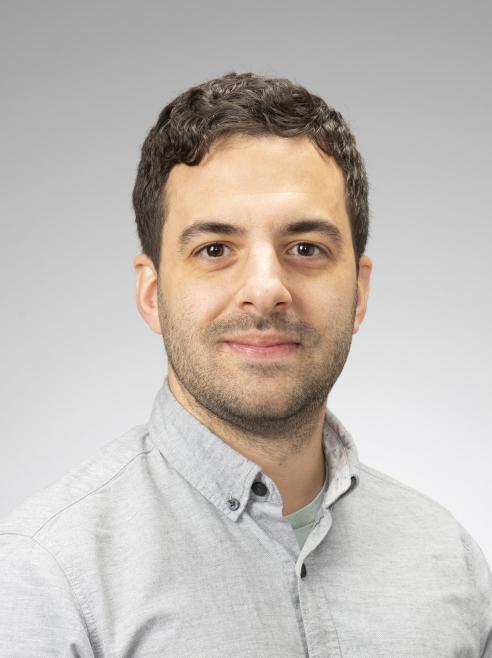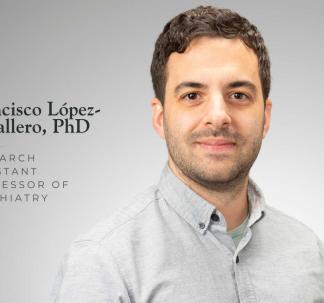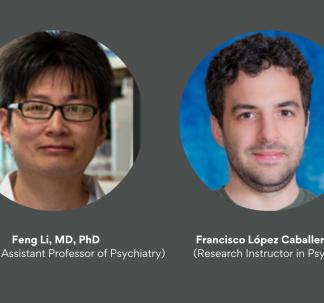
Francisco López Caballero, PhD
Research Assistant Professor of Psychiatry
Contact Details
3811 O'Hara St.
Pittsburgh
PA
15213
Education & Training
PhD
Neuroscience, University of Barcelona, Spain
Clinical Neurophysiology, University of Pittsburgh School of Medicine
Professional Affiliations
Member, Society of Biological Psychiatry
Member, Society for Research in Psychopathology
Member, Schizophrenia International Research Society
Research Interests
Neurophysiology of psychosis onset; Dynamics of neural response in auditory processing; Subcortical auditory abnormalities in psychosis
Selected Research Publications & Products- Lopez-Caballero F, Coffman BA, Seebold D, Teichert T & Salisbury D F. (2025). N1 facilitation at short Inter-Stimulus-Interval (ISI) occurs under 400 ms and is dependent on ISI from previous sounds: Evidence using an unpredictable auditory stimulation sequence. International Journal of Psychophysiology, 208, 112495. https://doi.org/https://doi.org/10.1016/j.ijpsycho.2024.112495
- Lopez-Caballero F, Coffman B, Seebold D, Teichert T & Salisbury DF. (2023). Intensity and inter-stimulus-interval effects on human middle- and long-latency auditory evoked potentials in an unpredictable auditory context. Psychophysiology, 60(4). Https://doi.org/10.1111/psyp.14217
- Lopez-Caballero F, Martin-Trias P, Ribas-Prats T, Gorina-Careta N, Bartrs-Faz D & Escera C. (2020). Effects of cTBS on the frequency-following response and other auditory evoked potentials. Frontiers in Human Neuroscience, 14. https://doi.org/10.3389/fnhum.2020.00250
- Lopez-Caballero F & Escera C. (2017). Binaural beat: A failure to enhance EEG power and emotional arousal. Frontiers in Human Neuroscience, 11. https://doi.org/10.3389/fnhum.2017.00557
- Lopez-Caballero F, Zarnowiec K & Escera C. (2016). Differential deviant probability effects on two hierarchical levels of the auditory novelty system. Biological Psychology, 120. https://doi.org/10.1016/j.biopsycho.2016.08.001
Clinical Interests
Selected Clinical Publications & Products- Lopez-Caballero F, Coffman BA, Curtis M, Sklar AL, Yi S & Salisbury DF. (2025). Auditory sensory processing measures using EEG and MEG predict symptom recovery in first-episode psychosis with a single-tone paradigm. NeuroImage: Clinical, 45, 103730. https://doi.org/https://doi.org/10.1016/j.nicl.2024.103730
- Lopez-Caballero F, Auksztulewicz R, Howard Z, Rosch RE, Todd J & Salisbury DF. (2024). Computational synaptic Modeling of Pitch and Duration Mismatch Negativity in First-Episode Psychosis Reveals Selective Dysfunction of the N-Methyl-D-Aspartate Receptor. Clinical EEG and Neuroscience, 56(1), 2234. https://doi.org/10.1177/15500594241238294
- Valt C, Lopez-Caballero F, Tavella A, Altamura M, Bellomo A, Barrasso G, Coffman B, Iovine F, Rampino A, Saponaro A, Seebold D, Selvaggi P, Semisa D, Stolfa G, Bertolino A, Pergola G & Salisbury DF. (2024). Abnormal inter-hemispheric effective connectivity from left to right auditory regions during Mismatch Negativity (MMN) tasks in psychosis. Psychiatry Research, 342, 116189. https://doi.org/https://doi.org/10.1016/j.psychres.2024.116189
- Salisbury DF, Lopez Caballero F & Coffman BA. (2024). Development of biomarkers potentially sensitive to early psychosis using mismatch negativity (MMN) to complex pattern deviations. Clinical EEG and Neuroscience, 56(1), 8390. https://doi.org/10.1177/15500594241254896
- Lopez-Caballero F, Curtis M, Coffman BA & Salisbury DF. (2023). Is source-resolved magnetoencephalographic mismatch negativity a viable biomarker for early psychosis? European Journal of Neuroscience. Https://doi.org/10.1111/ejn.16107
Education Interests
Developmental Neuroscience
Selected Education Publications & Products- Escera C, Lopez-Caballero F & Gorina-Careta N. (2018). The potential effect of forbrain as an altered auditory feedback device. Journal of Speech, Language, and Hearing Research, 61(4). Https://doi.org/10.1044/2017_JSLHR-S-17-0072
- Escera C, Gorina-Careta N & Lopez-Caballero F. (2018). The potential use of Forbrain in stuttering: A single-case study. Anuario de Psicologia, 48(2). Https://doi.org/10.1016/j.anpsic.2018.06.001


